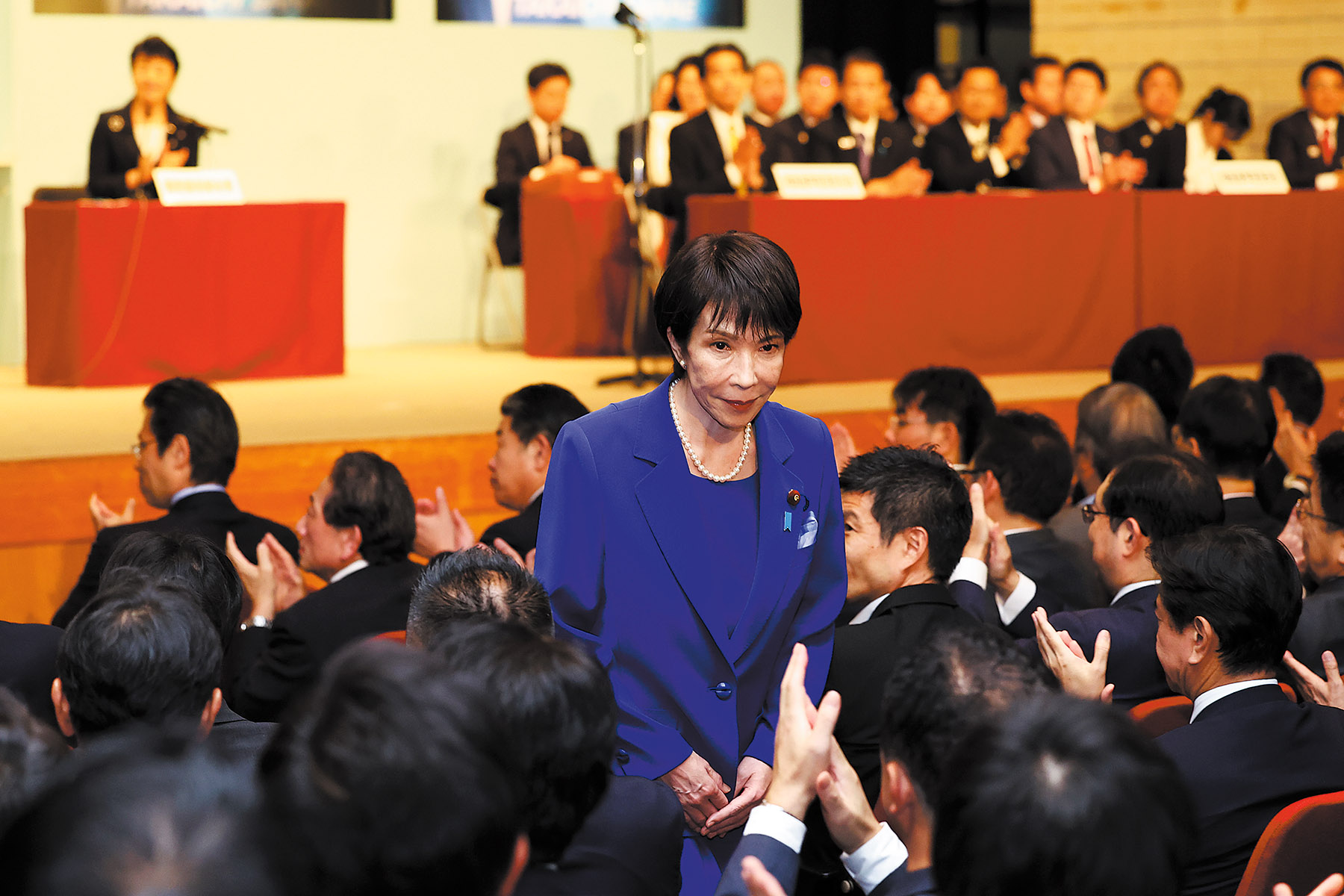Tokyo set to see first female prime minister, signaling change in sociopolitical atmosphere

The election of Sanae Takaichi as the first female president of Japan’s long-governing Liberal Democratic Party (LDP) and the possibility of her becoming the country’s first female prime minister indicate a shift toward greater conservatism in Japan’s sociopolitical atmosphere, according to experts.
Takaichi, 64, a former economic security minister and an ultra-conservative lawmaker, defeated Shinjiro Koizumi, 44, agriculture minister and son of former prime minister Junichiro Koizumi, in an LDP vote runoff on Oct 4.
Responding to foreign media queries regarding the LDP final vote outcome, a Chinese Foreign Ministry spokesperson said, “We have noted the election result, which is Japan’s internal affairs.”
The spokesperson added, “We hope the Japanese side will abide by the principles and consensus set out in the four political documents between China and Japan, honor its political commitments on major issues such as history and the Taiwan question, follow a positive and rational policy toward China, and put into practice the positioning of comprehensively advancing the strategic relationship of mutual benefit.”
On Oct 4, none of the three other candidates in the fray — Japan’s Chief Cabinet Secretary Yoshimasa Hayashi, its former economic security minister Takayuki Kobayashi, and former LDP secretary-general Toshimitsu Motegi — achieved a majority in the first-round vote.
In the runoff, Takaichi won 185 votes to Koizumi’s 156, drawing on a broad base of support among local party members and affiliates. With her replacing Prime Minister Shigeru Ishiba as the LDP leader, the conservative party hopes to regain public support and stay in power despite major election debacles in the National Diet, Japan’s parliament.
On Oct 7, Takaichi appointed former finance minister Shunichi Suzuki as the LDP’s secretary-general and former prime minister Taro Aso as its vice-president.
The LDP’s new executive lineup also includes Kobayashi as its new policy council chief.
Haruko Arimura, former minister in charge of women’s empowerment, was chosen to head the LDP’s decision-making General Council, while Keiji Furuya, who once led Japan’s National Public Safety Commission, was named election strategy chief.
Hiroshi Shiratori, a professor of political science at Hosei University in Tokyo, noted that Takaichi led by a wide margin in party member and supporter votes in the first round.
During her election campaign, Takaichi promised a tougher stance on foreigners in Japan.
Shiratori explained that these votes originally came from LDP supporters, but shifted to parties such as the far-right Sanseito and the center-right Democratic Party for the People in the upper house election due to their active advocacy on the matter. That gave the LDP race a distinct “social media leadership election” character, he said.
Ukeru Magosaki, director of the East Asian Community Institute and a former senior official at Japan’s Ministry of Foreign Affairs, said that many Western countries are facing economic stagnation and widening inequity, making life difficult for many of their citizens, who blame foreigners for their hardships.
Japan is experiencing a “similar trend”, as economic hardships and xenophobia are becoming increasingly intertwined with politics, he added.
The LDP leadership race took place amid growing political woes after the coalition with the Komeito party lost its majority in both houses of parliament — the first such situation since the LDP was founded in 1955.
Policy analyst Shigeaki Koga, a former official at Japan’s Ministry of Economy, Trade, and Industry, said that Komeito — long considered a “stabilizing pillar” in both elections and governance — has taken an unusually hardline stance this time, clouding the coalition’s future.
Komeito and its parent organization, the Soka Gakkai Buddhist group, have expressed concern over Takaichi’s views on key issues, including her past visits to the notorious Yasukuni Shrine, which glorifies Japan’s wartime militarism by honoring 14 convicted Class-A war criminals.
Another key issue is the “black money” scandal concerning the misuse of campaign funds.
Like the LDP, Komeito lost seats in July’s upper house election and sees its reputation harmed by the LDP’s undeclared funds case.
Takaichi’s appointment of a lawmaker involved in the scandal has deepened mistrust within Komeito.
After meeting with Takaichi on Oct 4, Komeito party leader Tetsuo Saito said, “Our supporters are deeply uneasy and worried. There is no coalition if we cannot address those concerns.”
Before the leadership election, most analysts believed that despite growing dissatisfaction within Komeito, the party would ultimately continue its cooperation with the LDP.
However, the current tense atmosphere suggests the coalition may face new cracks, Koga added.
At her first news conference as LDP leader, Takaichi said, “The LDP marks a new era.” She pledged that the party, which has held power almost continuously for 70 years, will transform the public’s “anxieties into hope”.
Takaichi’s leadership is scheduled to last two years, until September 2027, completing the remainder of Ishiba’s original three-year term.
She is likely to be chosen as Japan’s next prime minister at an extraordinary parliamentary session, to be held around Oct 15.
Contact the writers at houjunjie@chinadaily.com.cn


